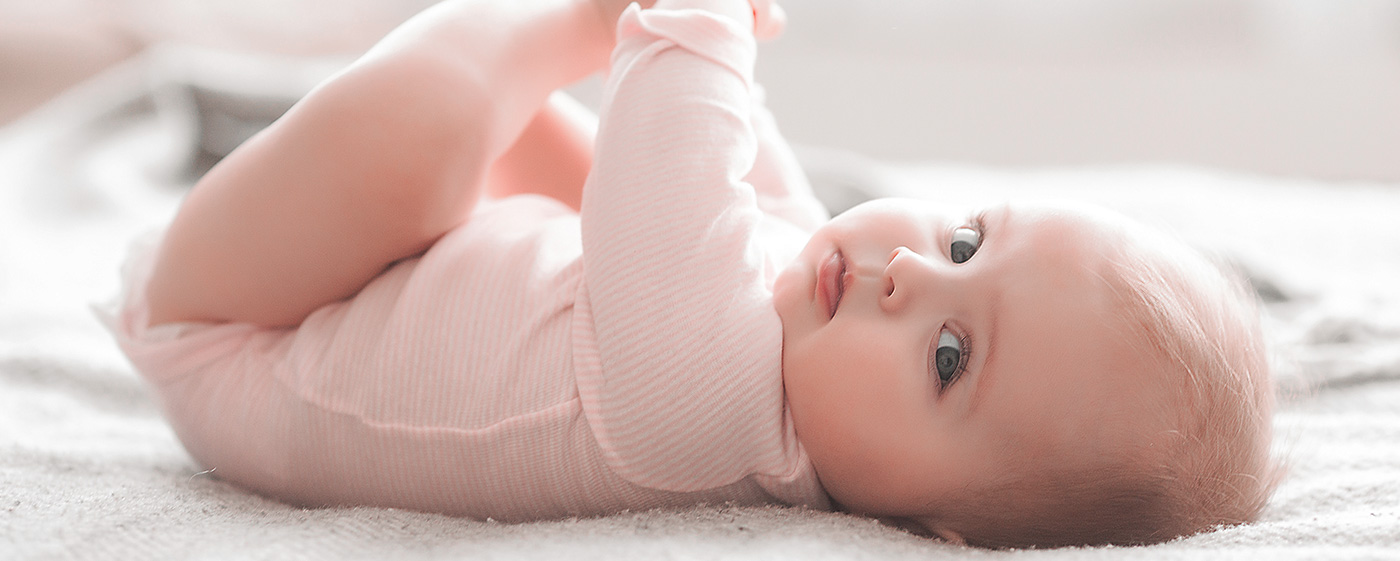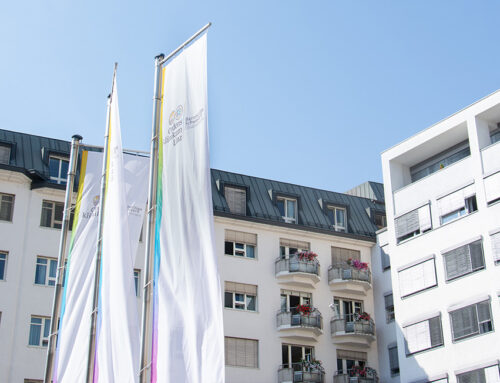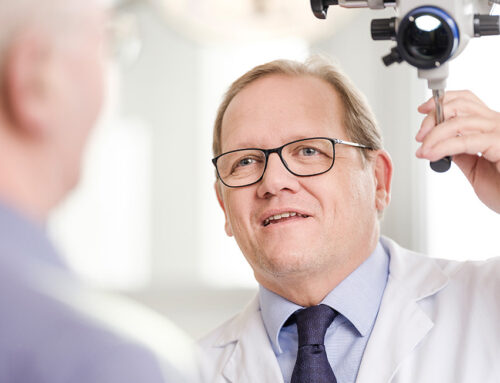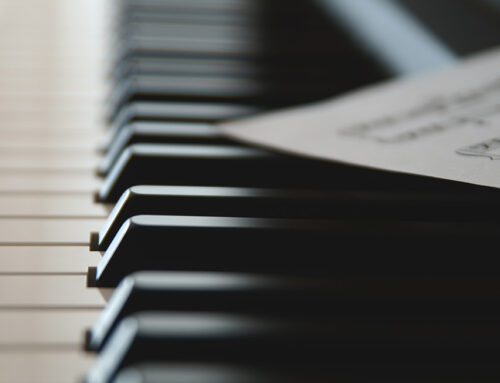The importance of early diagnosis of unilateral hearing loss
The results the team at the Kepler University Hospital in Linz (Upper Austria) have achieved with cochlear implants for single sided deafness are promising for adults and children alike.

Since 2009, February 25th marks the International Cochlear Implant Day. And on this day, 10 years later, little Bahran[1] received his cochlear implant. Soon after he was born, a newborn hearing screening was performed. This is a standard care in Austria. “Results were out of range in one ear”, Sabrina Ackerl, audiologist at the Kepler University Hospital’s ENT Department recalls. “The little boy went through the entire diagnostic process until final diagnosis.” Single-sided deafness in one ear, normal hearing in the other ear.
The specialists at the ENT clinic recommended a CI on the deaf side. “In quiet settings, single-sided deafness is not a big problem”, Sabine Ackerl explains. “But in noise it is. It starts at nursery school and gets more difficult in school.” A decade ago, US studies already concluded that more than a third of the children with unilateral hearing loss had to repeat at least one year at school – significantly more than children with normal hearing. More than half of them required private lessons for several years. It also demonstrated delays in language and socio-emotional development. Specialists in Turkey, where Bahran’s family originates from, also recommended a cochlear implant. So the family went ahead and their little boy received his CI.
Austria: a pioneer
Austria was the first country to introduce a universal Newborn Hearing Screening (NHS) programme across the country. This was way back in 1995. A hearing assessment became obligatory for toddlers.
In 2017, the Austrian Audiological Society updated the guidelines on Newborn Hearing Screening and Testing. Since then, it requires an examination of both ears and recommends raising awareness with parents for their child’s hearing and speech development. “We strive to provide children with unilateral hearing loss with a hearing device to prevent disadvantages in their development.” If the hearing loss is 70 decibel or more, a cochlear implant is recommended.
Security net for people with hearing loss
The Upper Austrian hospital is proud of its role as a pioneer in introducing a newborn hearing screening programme. Today a standardized routine procedure ensures that families are well cared for: The first screening is done at the maternity ward, or for children with health problems at the neonatal intensive care unit. Parents should ideally be present during the screening. Sabrina Ackerl explains: “We can ask questions on their medical history, e.g. if hearing loss runs in the family. And we can explain the results to the parents in detail.”
If the test result is out of range, an appointment for another screening is made. This ensures a complete diagnosis and follow-up. “In many Austrian hospitals NHS are performed on both ears as a standard of care.” But this is not true in all hospitals and countries. “If a child suffered from single-sided deafness in former days, nothing was done about it, because he or she would still develop speech.”
“We regularly see adults between 30 and 40 years of age who have been deaf in one ear from birth and would like to do something about it now. They are concerned that their second ear might get worse one day. But for them, it is too late to get a cochlear implant. This is why I recommend early implantation for a child – to make sure he or she will still hear well in 40 or 50 years’ time.
Consequences of unilateral hearing loss
“I am currently seeing two kids whose unilateral hearing loss was only diagnosed when they were two and four years old. Their parents found out after they faced troubles in noisy situations at nursery school”, Ackerl continues. Experience has shown that early intervention in single-sided deafness is of great importance. Sometimes implantation is delayed for various reasons, especially in countries that do not offer a universal newborn hearing screening programme. Hearing problems were often discovered at school age only. “Nowadays, nursery school teachers observe children’s reactions and behaviour more closely. This is why hearing problems often show before kids start school.”
People who hear with two ears are able to filter out relevant information in noisy surroundings. They can also tell the direction sound is coming from. The brain requires acoustic information from both ears for this cognitive task. People with poor or no hearing in one ear miss out on sound information on the deaf side. This may be irritating in large groups with many people talking, but also when the communication partner is sitting on the non-hearing side.
The hearing ear is leading
Various devices are available to treat unilateral hearing loss. CROS hearing aids or hearing implants like the Bonebridge pick up sound on the deaf ear and transmit it to the hearing side. This helps to hear sounds coming in from the deaf side. Full bilateral functionality for people with single-sided deafness can only be achieved with a cochlear implant.
Mrs Ackerl knows the challenges hearing rehab may pose to CI users with single-sided deafness: “The hearing ear simply wants to remain the leading ear. In rehab we mask the hearing ear or bypass it with technology – with apps, audio books, etc.” The signal is sent straight to the CI audio processor via a telecoil.
Small children don’t accept masking the ear, but: “They love playing on the tablet or smartphone” – a good prerequisite for hearing training with small children, especially for those with single-sided deafness. The kids have to find the animals matching the corresponding animal sound while they are listening to a story which they perceive with the hearing ear.

In parts of Austria speech development is assessed before children start school.
Who is calling me?
“Hearing training for CI users with single-sided deafness requires patience: Auditory development usually takes a bit longer than in patients who are deaf in both ears. Single-sided deaf users hear sound signals quickly, but they have troubles in difficult, noisy listening situations.” Mrs Ackerl continues: “We need to motivate and encourage our patients.” Hearing an approaching car or other warning signals is often their first success. Speech understanding with the CI comes slowly, sometimes even unnoticed.
Bahran is still too young to share his hearing impressions verbally. Sabrina Ackerl, his speech therapist, is recommending his parents to observe his development closely: “How is he doing in noise, in a group situation? Does he respond when his name is being called? Is he looking into the direction the sound was coming from?” The first behavioural changes will likely be seen at home. Now the toddler has plenty of time to fully develop his hearing abilities.
Hearing health
In Austria, every newborn baby’s hearing should be examined during their first month of life. Every child born with a hearing loss, in one or both ears, should be tracked as early as possible. The entire diagnostic procedure should ideally be finished by the age of six months. By then, the child should be provided with a hearing device.
Children born with healthy hearing may develop hearing problems, Sabrina Ackerl, speech therapist at the Kepler University Hospital in Linz explains: “In Upper Austria, speech therapists usually visit nursery schools to assess the speech development and hearing abilities of four and five year old children. If a child’s hearing is out of the range, Ackerl recommends seeing an ENT. Some children can only be tested in their last, obligatory year of nursery school, at the age of five or six.
It would still be great to make a hearing test at five years of age obligatory, because not all children attend nursery school. “Thus, we could make sure no child will be missed out.” Other countries are also discussing a second hearing assessment before children start school. The Czech Republic is one of them.
Healthcare for adults lies in their own responsibility. Considering the implications of hearing loss on older adults, international experts call for hearing checks as part of a regular health assessment.
[1] Name changed for reasons of data protection.






